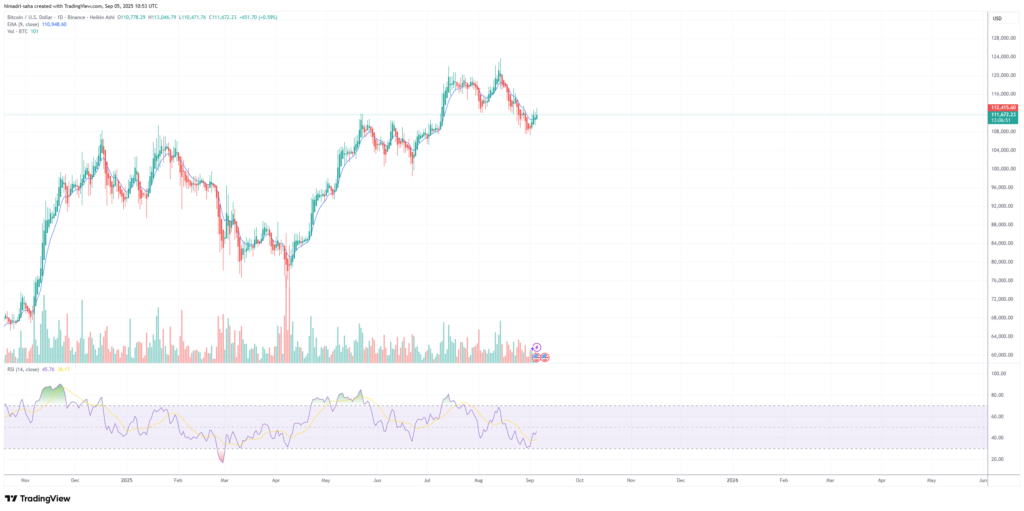Yo DD amigos! What have you been up to? Markets are looking up after a brief bearish phase. The collective sentiment’s also showing renewed confidence. This week’s big update is that Wall Street wants to have every inch of the crypto pie. And they are ready to rock the market with billions worth of firepower (read cash). This phase is what a launchpad formation (for liftoff) looks like. The eponymous calm before the storm. Don’t think so? Read on. You might change your mind. 😉
Here’s what we have for you in this issue:
- BTC, ETH & SOL building a home on Wall Street
- Solana set to become the Visa of blockchains
- Coming up: Ethereum’s next wave of transformation
NYSE, Nasdaq, CBOE, CME to list BTC, ETH, SOL 😯
Yes, you read that right.
According to a joint statement from the US Securities and Exchange Commission (SEC) and the Commodity Futures Trading Commission (CFTC), the New York Stock Exchange (NYSE), Nasdaq, CBOE, and CME are open to offering spot trading for Bitcoin, Ether, SOL, and more.
Source: @EleanorTerrett
Details:
- The Joint Playbook: The SEC’s Division of Trading and Markets and the CFTC’s Division of Market Oversight will issue guidance on leveraged, margined, and financed spot digital asset trades.
- From Conflict to Collaboration: Historically, the agencies clashed over the crypto’s ambiguous legal status. This announcement marks the shift from conflict to harmonization and regulatory clarity.
- Project Crypto + Crypto Sprint: The collaboration builds on each agency’s initiatives and was pushed by the President’s Working Group.
- Market Priorities: The guidance will cover listing, clearing, surveillance, and data dissemination—basically setting up the foundation for regulated crypto spot markets.
Crypto markets reacted positively in unison.
Bitcoin bounced from the local bottom at $108k to top $112k along with the broader crypto market.

Why celebrate?
- Imagine BTC, ETH, SOL, and other blue-chip cryptos beginning spot trading on CME, Nasdaq, and NYSE. Imagine the top coins and all their markets getting “inner (and mainstream) Wall Street circle exposure.”
- Institutional Confidence: Spot contracts that settle in the actual asset improve integrity and transparency, removing excuses for institutions that stayed on the sidelines.
- The current US administration loves crypto and digital assets in general. CFTC’s Caroline Pham said it outright: “The message is clear—innovation is now welcome.” That’s a 180° from the last administration’s mixed signals.
With spot crypto trading graduating from Binance and Coinbase to the NYSE, and regulated, federally overseen spot crypto markets finally becoming the new norm, we can bid farewell to the biggest regulatory and institutional obstacles to mainstream adoption.
If BTC ETFs were the appetizer, spot trading on Nasdaq and CME is the main course. The question is, are you ready for what’s coming next? 😁
Solana: The Visa of Blockchains 😎
Well, if it sounds too good to be true, then pinch yourself. This is happening for real.
Solana just voted 98.27% in favor of the biggest upgrade in its history. The Alpenglow overhaul promises transaction finality in 150 milliseconds—on par with Visa and Mastercard.
Yes, you read that right 😉
If it works, Solana won’t just be “the fast chain.”
It will be the first blockchain to deliver Web2 responsiveness with L1-level security.
Source: @SolanaStatus
Let’s not act all naive and feel overwhelmed. This has been in the works for quite some time now. Solana devs had made it their life mission to reach a milestone that unlocks real-time, real-life transaction efficiencies, not just for blockchain plebs but for “plebs in general.”
It was always supposed to be about massive, worldwide adoption, remember?
Some “glowing” Alpenglow details:
- The Vote: Validators overwhelmingly approved Alpenglow, set for deployment in 2026.
- The Tech: Proof-of-History + TowerBFT will be replaced by Votor, a direct-vote consensus that runs blocks off-chain and posts compact proofs on-chain.
- The Numbers:
- Transaction throughput: 107,000 TPS tested
- Finality time: 12.8 seconds → 150 milliseconds
- Validator costs: $60,000 per year → ~$1,000 with new fee structure
- The Economics: Validators will pay a 1.6 SOL per-epoch “ticket,” which is burned to add deflationary pressure. Misbehavior (abstaining, contradictory votes) risks penalties or removal.
- The Use Cases: Efficient gaming, high-frequency DeFi, tokenized securities, and CBDC-grade settlement become realistic at this speed.
Ethereum and Ethereum killers kept talking, and team Solana just pulled their “ace in the hole.”
Here’s why it matters:
- Solana just declared that blockchains don’t need to be “fast enough for DeFi.” They need to be “fast enough for Wall Street.”
- A successful upgrade will close the gap with CBDCs, unlock real-time on-chain markets, and put Solana on the same playing field with Visa, Mastercard, et al., but with the advantage of programmable money.
The Solana Foundation summed it up: “Financial infrastructure that operates at internet speed.”
Hope your SOL bags are nice and full. 😁
Ethereum is growing up. 🪴
Over the next few years, the Ethereum Foundation will unload 10,000 ETH (~ USD 43 million) to fuel research, grants, and community growth.
The foundation is entering a new transformative phase, but mind you, this is not panic selling.
It’s part of a newly formalized treasury policy that’s turning ETH into something bigger: a managed reserve asset, complete with rules on what to liquidate, when, and how.
What’s the narrative?
- The Sale: Ethereum Foundation will split the 10,000 ETH sale into smaller CEX (centralized exchange ) orders to avoid jolting the market. Proceeds will go to grants, operational funding, and ecosystem donations.
- The Policy Shift: Under EF’s June treasury guidelines, no more than 15% of its ETH can be liquidated annually for ops. The foundation must also maintain a multi-year fiat buffer to avoid overdependence on ETH price swings.
- The Bigger Picture: This isn’t the first sale—EF sold $25M to SharpLink Gaming in July and another $12.7M earlier this year. But the consistent framework signals ETH is being professionalized as a treasury asset, similar to how BTC is treated in corporate balance sheets.
And why should it matter?
- ETH =
Blockchain tokenCorporate Reserve: The days of ETH trading as a speculative cryptocurrency token are over. Ether Machine just scooped 150,000 ETH ($1.5B) for a Nasdaq-bound treasury. The Ethereum Foundation’s new treasury playbook validates ETH as a corporate reserve asset. - And the associated institutional narrative: Investors like Yunfeng Financial Group stepped in to buy ETH the same day EF announced the sale. That softens any “dump” narrative and shows Wall Street is hungry for ETH exposure.
Source: @TedPillows
Moral of the story: Pay no heed to the noise about “the Ethereum Foundation selling ETH.”
Ethereum is actually growing up and becoming a mature asset.
How do we say that?
Treasuries, structured liquidation policies, institutional buys, and Lubin openly saying ETH could overtake BTC as the global monetary base—these are solid indicators of the next phase of ETH’s maturation.
EF isn’t weakening Ethereum by selling. It’s strengthening its foundations for the next wave of adoption.
So, don’t feel bad about your ETH bags, alright?
This is all for this time. Hope our bullishness rubbed off on you. See you at the next one with more exciting updates.
Ciao! 👋
























